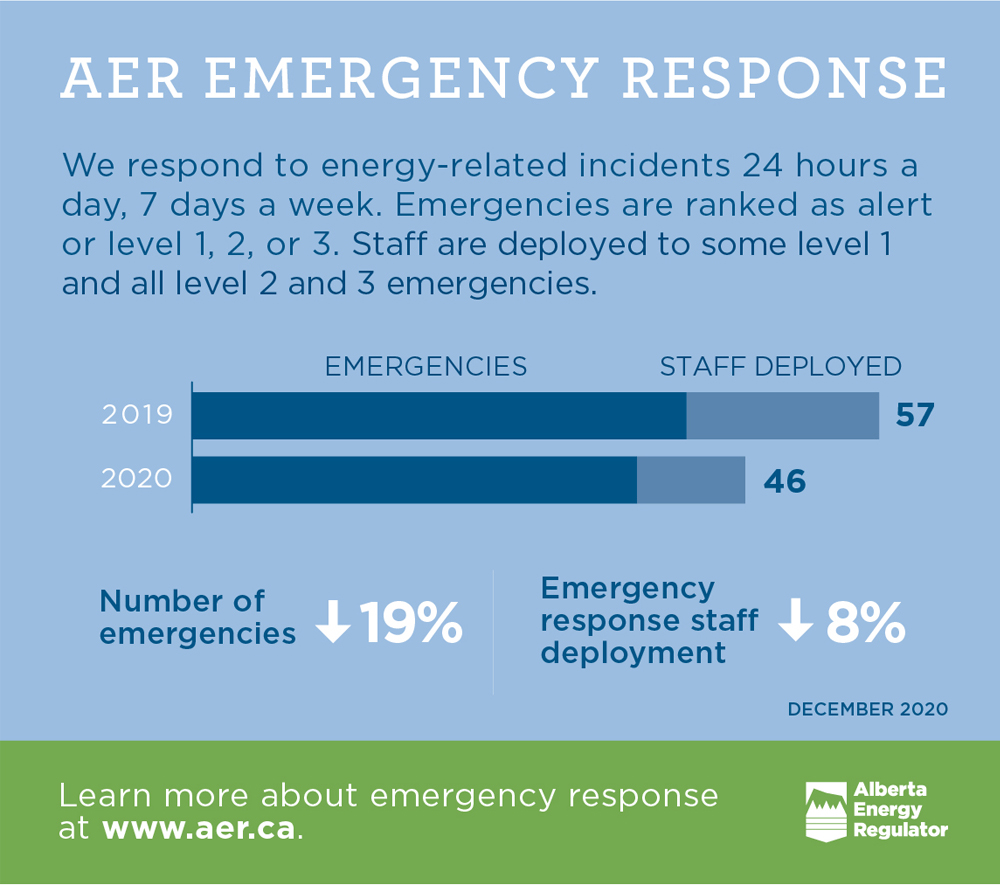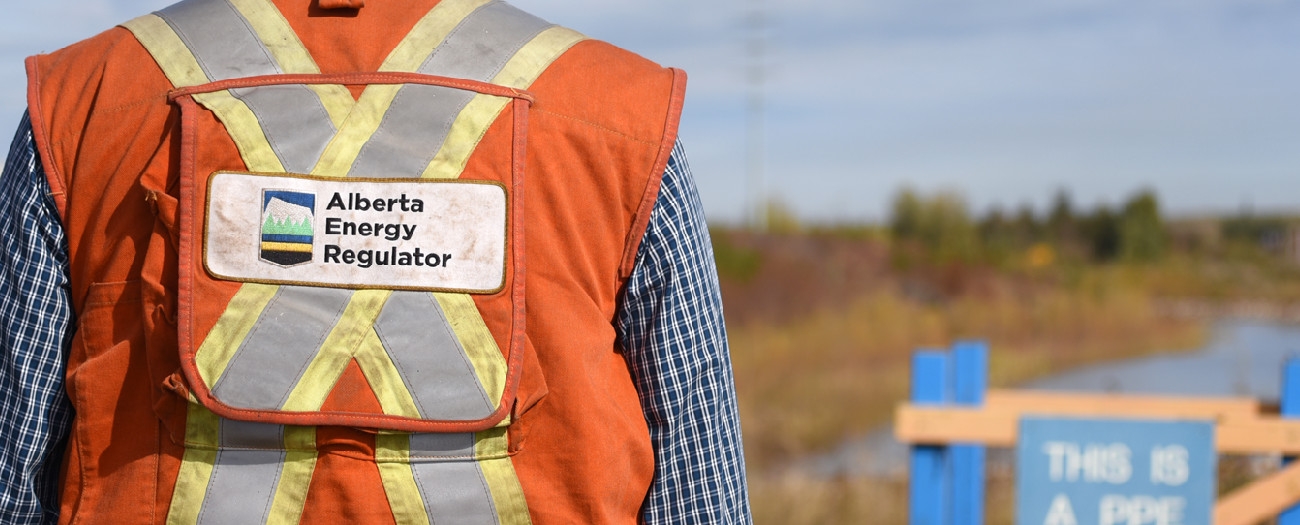The AER’s Field Incident Response Support Team is always ready to support
Alberta - May 04, 2021Emergencies seem to happen at the most inconvenient times – late Friday afternoon, long weekends, during vacation or holidays in December, or in the middle of a global health pandemic.
And when they do, there's only one way to deal with it: Get big quick! In other words, never underestimate an emergency and always be prepared – you can always scale back if you need to.

These are words to live by for the Alberta Energy Regulator's Field Incident Response Support Team (FIRST), a unique team of specialists working within the chaos of fires, floods, pipeline spills, gas leaks, and other emergency situations. No matter the size of the emergency, or where in Alberta it's located, you'll likely find the AER's team on site ensuring Albertans are safe and the environment remains protected.
"Get big quick means we always prepare to respond to the worse-case scenario," says AER emergency response coordinator, Mark Zamin. "So, get everyone involved right away and then send home the ones you don't need once you have sized up the situation."
For nearly a decade, Zamin has been one of nine people on FIRST ready to respond to an emergency anywhere in the province, regardless if it is related to oil and gas or not. FIRST works closely with other government agencies, such as the Alberta Emergency Management Agency, as well as with municipalities and first responders.
“We will always step in to protect the public. We have the knowledge, the training, and the ability to help out.”
Mark Zamin, AER emergency response coordinatort
"The members of our team are so well trained we are often called upon to assist during provincial emergencies," says Zamin.
FIRST responds to between 18 and 24 emergencies annually, with incidents lasting anywhere from three to 28 days, depending on the complexity. At the same time, it's important to keep their skills up-to-date, and they dedicate a lot of time to reviewing best practices and putting them to work in training exercises.
Where the rubber meets the road
Although COVID-19 and lockdown restrictions have impacted the way FIRST trains, it hasn't prevented them from staying sharp. On an annual basis, FIRST can participate in upwards of 100 exercises with teams within the AER, outside agencies, and oil and gas companies.
Under Directive 071: Emergency Preparedness and Response Requirements for the Petroleum Industry, energy companies are required to practice how they'll respond to emergencies through "tabletop" exercises at least once a year. A tabletop is when energy industry emergency responders discuss how a company would react to an emergency. Full-scale exercises, which involve completing actual response activities like deploying staff or setting up an emergency response team, are required every three years.
During an actual emergency, the AER may have boots on the ground, but it isn't responsible for managing the incident response - that is up to the company behind the incident. Instead, FIRST provides support, focusing on public safety and environmental protection and ensuring response activities don't cause further harm to the environment.
Although Mother Nature is partially to blame for some of Alberta's most historical emergencies, such as the 2011 Slave Lake fire, 2013 southern Alberta floods, or the 2016 Fort McMurray wildfire, she can't be blamed for everything.
Working together
In the fall of 2020, FIRST joined municipal and provincial response teams, including Alberta Environment and Parks and the Alberta Serious Incident Response Team (ASIRT), on a full-scale emergency exercise in Slave Lake. The mock incident involved a pipeline leak into a nearby waterbody.
"This response demonstrated how multiple jurisdictions can collaborate with industry for the good of all Albertans and the environment," said Zamin.
Teams worked together to set up incident command in the Yellowhead Fire Department truck bay and used Lesser Slave Lake to simulate a spill response. Teams practiced deploying lake booms and shore crews to contain the imaginary spill, and even installed wildlife deterrents.
For Zamin, it is exercises like the one in Slake Lake that prepare FIRST for the real thing – even if the AER isn't leading the response.
"We will always step in to protect the public," says Zamin. "We have the knowledge, the training, and the ability to help out."
Tonya Zelinsky, Writer


